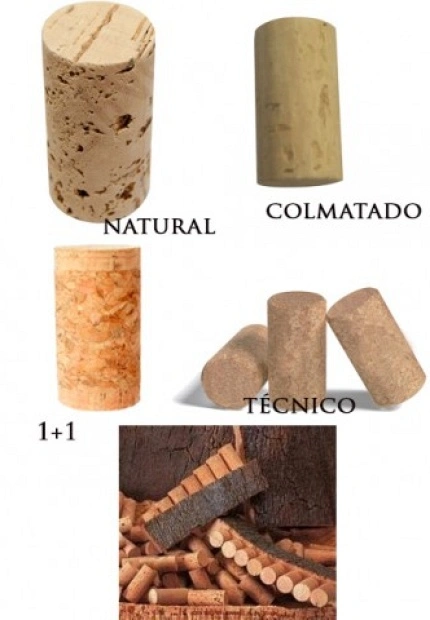The importance of cork in wine
**The Importance of Cork Stoppers in the World of Wine: Beyond a Simple Sealant**
Choosing a cork stopper to seal a bottle of wine goes beyond the simple function of preserving the quality of the drink. This small natural device has played a crucial role in winemaking tradition for centuries, and its impact extends from wine preservation to sustainability and consumer experience.
**History and Tradition of Cork in Wine**
Cork has been used as a stopper for wine since ancient times. Its elasticity and ability to hermetically seal bottles make it an ideal material for preserving wine and allowing it to age in a controlled manner. This tradition has endured over the years, despite technological advances and the introduction of alternative closures.
**Preservation and Development of Wine**
One of the most crucial aspects of corks is their ability to allow controlled micro-oxygenation. Unlike other more airtight sealers, cork allows small amounts of oxygen to gradually enter the bottle, facilitating the development of the wine's aromas and flavors during the aging process. This delicate interaction between wine and oxygen contributes to the complexity and unique character of some wines.
**Sustainability and Renewability of Cork**
Cork comes from the bark of the cork oak, a tree that grows mainly in the Mediterranean area. Cork extraction is carried out in a sustainable way, since the bark falls off naturally every 9-12 years, without damaging the tree. This collection method, known as "corking", not only guarantees the renewability of the resource, but also contributes to the preservation of forests and local biodiversity.
**Alternatives and the Plug Debate**
Despite cork's long-standing tradition, recent decades have seen the introduction of alternatives such as plastic stoppers and screw caps. These methods seek to address cork contamination issues, such as "cork taste", which can negatively affect the wine. However, stopper choice remains a topic of debate in the wine industry, with advocates of each type of closure arguing about its impact on wine quality and consumer experience.
**The Consumer Experience and Cork Aesthetics**
Opening a bottle of wine sealed with a cork stopper is a ritual experience that adds a touch of elegance to the tasting. The sound of the cork being extracted and the tactile sensation of this natural material are elements that contribute to the consumer's sensory experience. Furthermore, the classic aesthetic of cork has been associated with quality and authenticity, adding intangible value to the presentation of the bottle.
**Innovations in Cork Stoppers**
The cork industry has not remained static in the face of challenges. Technically improved corks have been developed to address problems such as pollution. Stoppers composed of cork agglomerates or coated with technologies that minimize the possibility of defects have become popular options that seek to combine the best of both worlds: cork tradition and modern reliability.
**Cork Flavor and its Challenges**
The dreaded "cork taste" is a problem that has led some consumers to prefer other sealing methods. This defect, caused by chemical compounds present in some corks, can negatively affect the aroma and flavor of the wine. However, the cork industry has implemented rigorous quality controls and advanced techniques to minimize this problem, seeking to preserve the confidence of producers and consumers in cork as the stopper of choice.
**Conclusion: A Plug that Goes Beyond Closure**
In conclusion, corks are not simply seals for wine bottles, but fundamental elements that contribute to the preservation, development and experience of wine. Its rich history, its role in sustainability and its impact on consumer perception make cork a choice that goes beyond the functional, making it an essential component in the world of wine that continues to evolve over time. The choice between cork and other alternatives remains an important decision for wine producers and lovers, each with their own considerations about tradition, innovation and wine quality.

